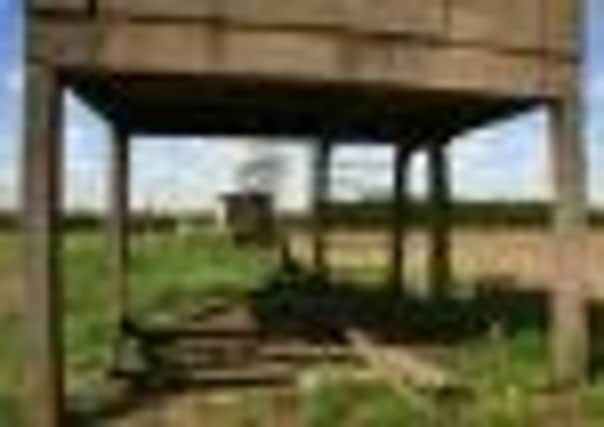Images of Cold War in York’s bunker


For 13 days in October 1962 as the US and Russia took the world to the brink of nuclear war, volunteers were poised to man Britain’s network of monitoring stations, each fitted with a basic pinhole camera. Their job was simple – to photograph Armageddon.
The button was never pushed, but on the 50th anniversary of the Cuban Missile Crisis, York’s Cold War Bunker is about to unveil a photographic exhibition that captures the role the county played in global political events.
Advertisement
Hide AdAdvertisement
Hide AdArmed with a map and a series of co-ordinates, photographer Graham K Cook set out to capture what had happened to the various monitoring posts dotted across the region.
“I live near to the Cold War Bunker and had been looking out for a new project, so when I realised this landmark anniversary was approaching, it stirred up some really strong emotions.
“When I was growing up the threat of nuclear war loomed large. I remember the information films about painting your windows white and leaning a door against a wall to make an indoor shelter. For a kid, it was all pretty terrifying.”
Having been officially stood down in 1991, York’s Cold War Bunker is one of only a few that haven’t been demolished and the monitoring posts have also been subject to the ravages of time.
Advertisement
Hide AdAdvertisement
Hide Ad“They were designed to be able to fit three volunteers at any one time and the idea was that if an attack happened they would be able to take a photograph of the flash. The details would then be relayed back to the bunker. To ensure the best view, many were placed on high ground and they have fabulous views across the Yorkshire landscape.
“The actual posts are now very overgrown as nature has taken its course, but for me they are particularly poignant as from them you see the beauty of the landscape which wasn’t destroyed by nuclear war.
“I wanted the exhibition to be a positive one. Yes, it’s about the Cold War, but it’s also about the fact that at the last minute sense prevailed. We were taken to the edge, but ultimately those who had the power to push the button decided there was another way.”
In the course of the project, Graham also talked to a number of surviving ROC volunteers who, had the worst happened, would have been expected to let their own families take their chances while they took up a position in the underground stations.
Advertisement
Hide AdAdvertisement
Hide Ad“It was an incredible thing to sign up for,” he says. “But a few of them did say that, had push come to shove, they weren’t sure whether they could have left their loved ones behind.”
While only 50 years ago – a heartbeat in terms of history, the Cold War is a period which has been largely forgotten.
It was part of the reason why English Heritage was keen to take charge of the York bunker, which reopened as a museum five years ago.
“We have school parties who think the Cold War was a Hollywood invention and the bunker really brings home what actually happened. One of the great things about this place is that it’s been left exactly how it was 50 years ago.
Advertisement
Hide AdAdvertisement
Hide Ad“They had a telephone line, but that was pretty much the extent of the technology. They basically were ready to plot the end of the world with a pencil and piece of perspex.”
Yorkshire’s Forgotten Cold War Landscape, photographs by Graham K Cook, York Cold War Bunker, October 16 to 18, 22, 23 &25.
Movies and Bunker tours
Alongside the exhibition the Cold War Bunker will also be showing classic Cold War films with Dr Strangelove on October 19 and The Spy Who Came in from the Cold on October 26. There will also be special hour-long guided tours of the facility on October 20, 21, 27 & 28.
On October 24, English Heritage’s Wayne Cocroft, author of Cold War: Building for Nuclear Confrontation will give a talk at the bunker at 7.30pm.
On October 29 visitors can make a basic pinhole camera.
More details on 01904 646940, www.english-heritage.org.uk